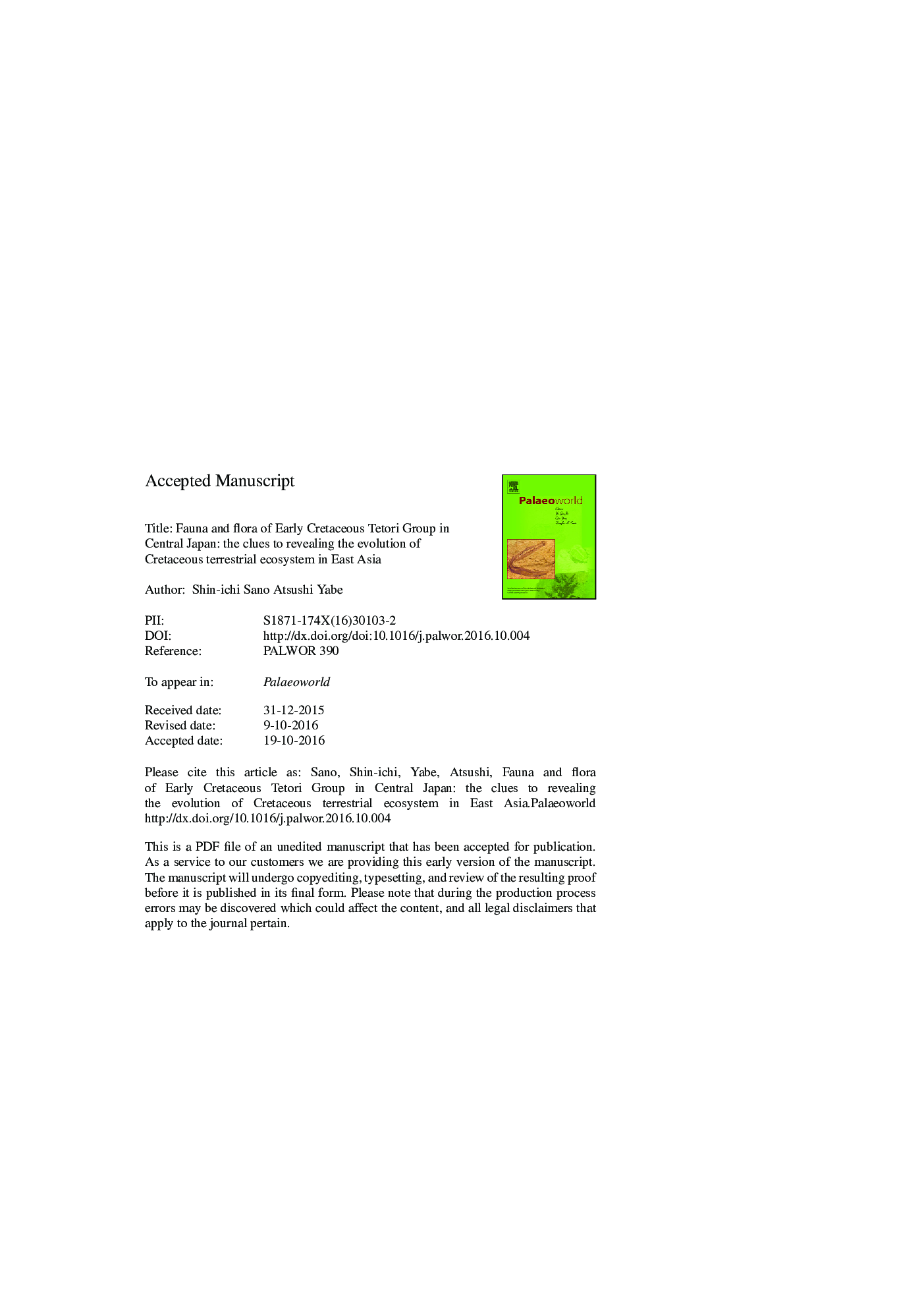| Article ID | Journal | Published Year | Pages | File Type |
|---|---|---|---|---|
| 5788238 | Palaeoworld | 2017 | 48 Pages |
Abstract
The Early Cretaceous Tetori Group in northern Central Japan was deposited in the eastern margin of the Asian Continent at mid-latitudes. It consists of two depositional stages: DS2 (Berriasian-late Hauterivian; mainly brackish environment with intercalations of marine horizons) and DS3 (Barremian-Aptian; freshwater environments only). Review of their faunal and floral compositions reveals that (1) two vertebrate fossil localities in DS3: Kaseki-kabe (upper part of the Kuwajima Formation) and Kitadani Dinosaur Quarry (Kitadani Formation) are assigned to the Barremian and the Aptian, respectively, and probably coeval to the Jehol Group in the Liaoning, northern China; (2) abundant freshwater bivalves occur in DS3, and the Trigonioides-Plicatounio-Nippononaia (TPN) assemblage is present only in the Kitadani Formation; and (3) stratigraphic change of plant assemblages in DS3 indicates that climatic change (warmer and dryer) occurred around the Barremian-Aptian boundary, which is concordant with the faunal change inferred from the choristodere-bearing assemblage in the Okurodani and Kuwajima formations to the crocodyliform-bearing assemblage in the Kitadani Formation. Vertebrate and invertebrate faunal as well as floral compositions of the Tetori Group are distinct from those of the Jehol Group. Paleoclimatic and/or paleogeographical conditions were probably different between two regions, and thus paleobiogeographical differentiation in East Asia is suggested in the Early Cretaceous.
Related Topics
Physical Sciences and Engineering
Earth and Planetary Sciences
Palaeontology
Authors
Shin-ichi Sano, Atsushi Yabe,
